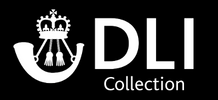Understanding The Colours

What Are Colours?
Infantry battalions of the British Army carry two Colours.
Colours were introduced in a series of orders issued by King George II in 1743, 1747 and 1751. Before this armies had carried standards of different designs into battle.
The King’s or Queen’s Colour is a Union Flag, usually with a golden trim and the crest of the regiment in the centre.
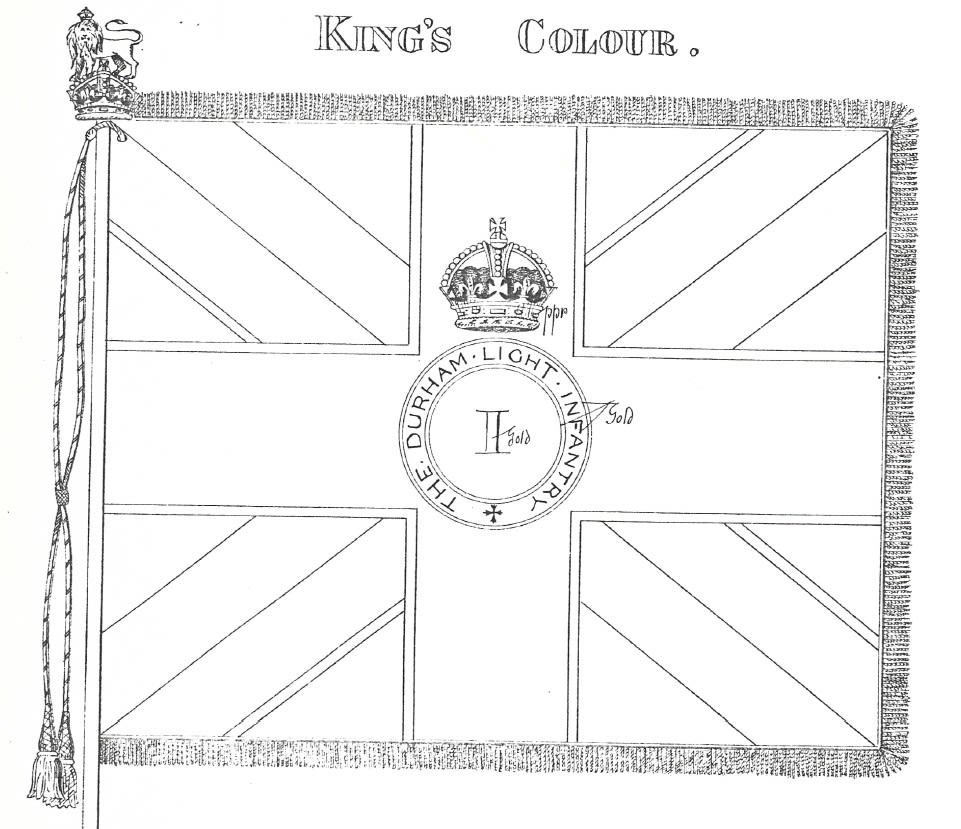
The Regimental Colour has the crest in the centre, surrounded by place names and dates. These are called battle honours.
The background colour usually matches the regiment’s uniform collar.
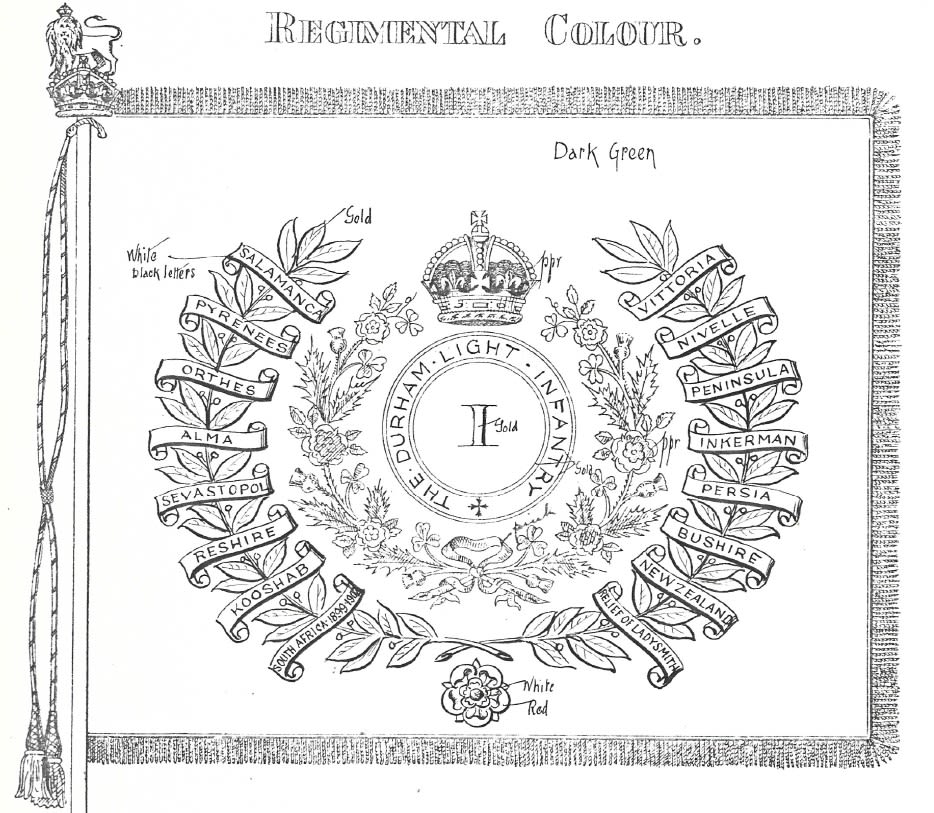
Battle honours were first added to Regimental Colours in 1768 as a way of honouring the regiment’s most significant conflicts and victories. Historically, King’s or Queen’s Colours did not have battle honours.
Due to the scale of conflict in the First and Second World War and the unprecedented loss of life, many new battalions were formed and many battle honours were awarded.
As there was not enough space to display these on the Regimental Colours, special permission was granted to display ten honours from each conflict on the King’s or Queen’s Colours.
How were Colours used?
The tradition of military Colours dates back to ancient armies carrying flags and standards into battle.
In the 1700s, the chaos of battle meant soldiers were often separated from their comrades and commanders. Colours provided a rallying point, showing troops the location of their commanding officer, whilst also boosting morale in times of need.
It was essential that soldiers recognised their regimental standards quickly and from a distance meaning different coloured silks and badges quickly came into use.
Who protected the Colours?
Ensigns, the most junior officer in a regiment, carried the Colours into battle. Carrying a Colour rather than a weapon made the Ensign a target for attack so a Colour Guard was formed to protect them. Protecting the Colours was a great honour as well as a heavy responsibility.
The capture of the Colours by enemy soldiers was a great dishonour to a regiment and there are many stories of heroic fighting to save the Colours. Soldiers of all ranks would risk serious injury or death if they saw that the Colours were in trouble. The 68th Regiment of Foot, which later merged into the Durham Light Infantry, never lost their Colours in battle.
Are Colours still taken into battle?
By the late 1800s, warfare had changed. Regiments found that carrying the Colours into battle revealed their location to the enemy. Due to the development of new long-range weapons, troops were more exposed to attack meaning that Colours were no longer an advantage.
After government debate, an official decision was made that Colours were not to be used on the battlefield. The last time Colours were used as a rallying point in battle by a British Regiment was at the Battle of Laing’s Nek, 1881, during the Boer War in South Africa.
Image: Vincent Adriaenssen (1595 – 1675), The Battlefield, Oil on canvas.
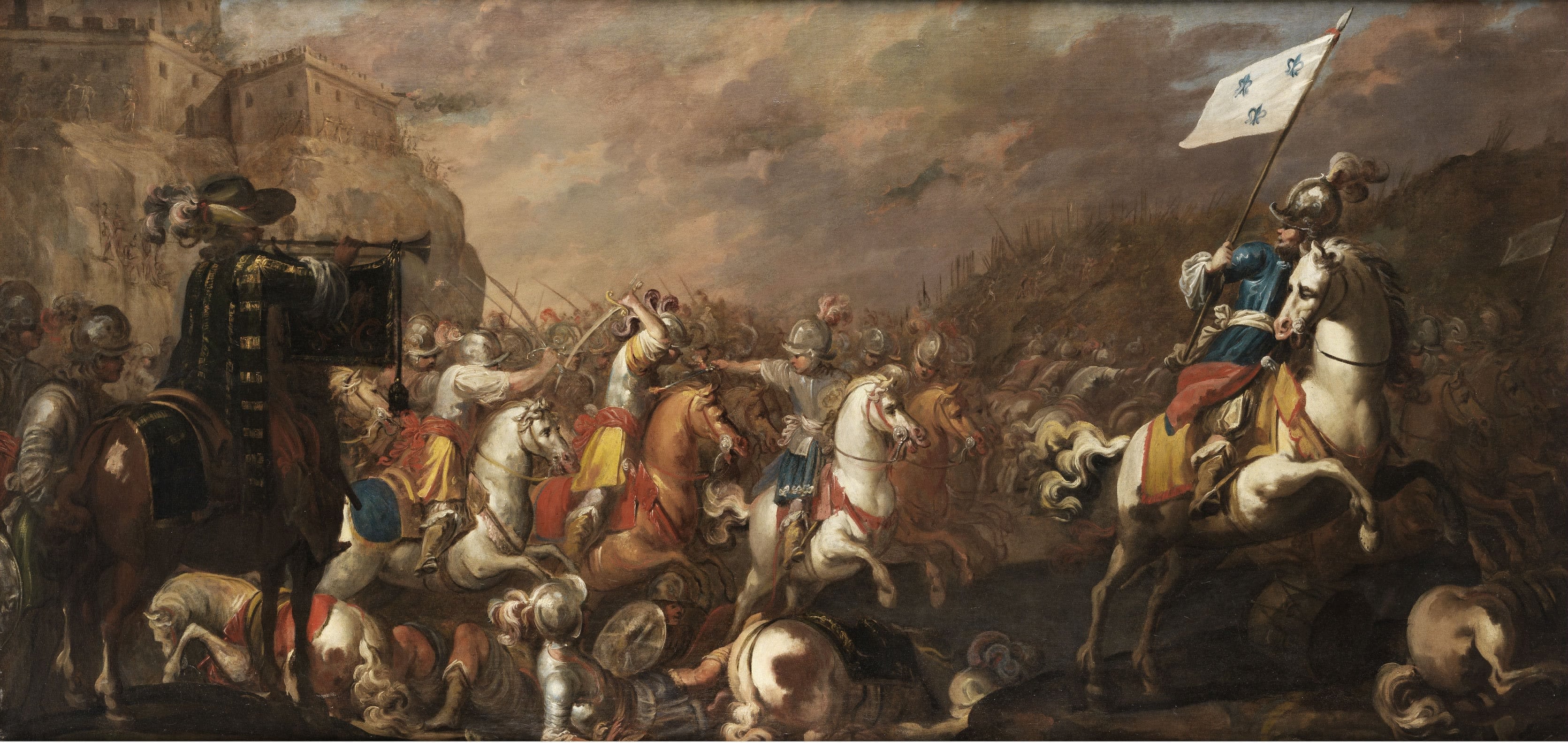
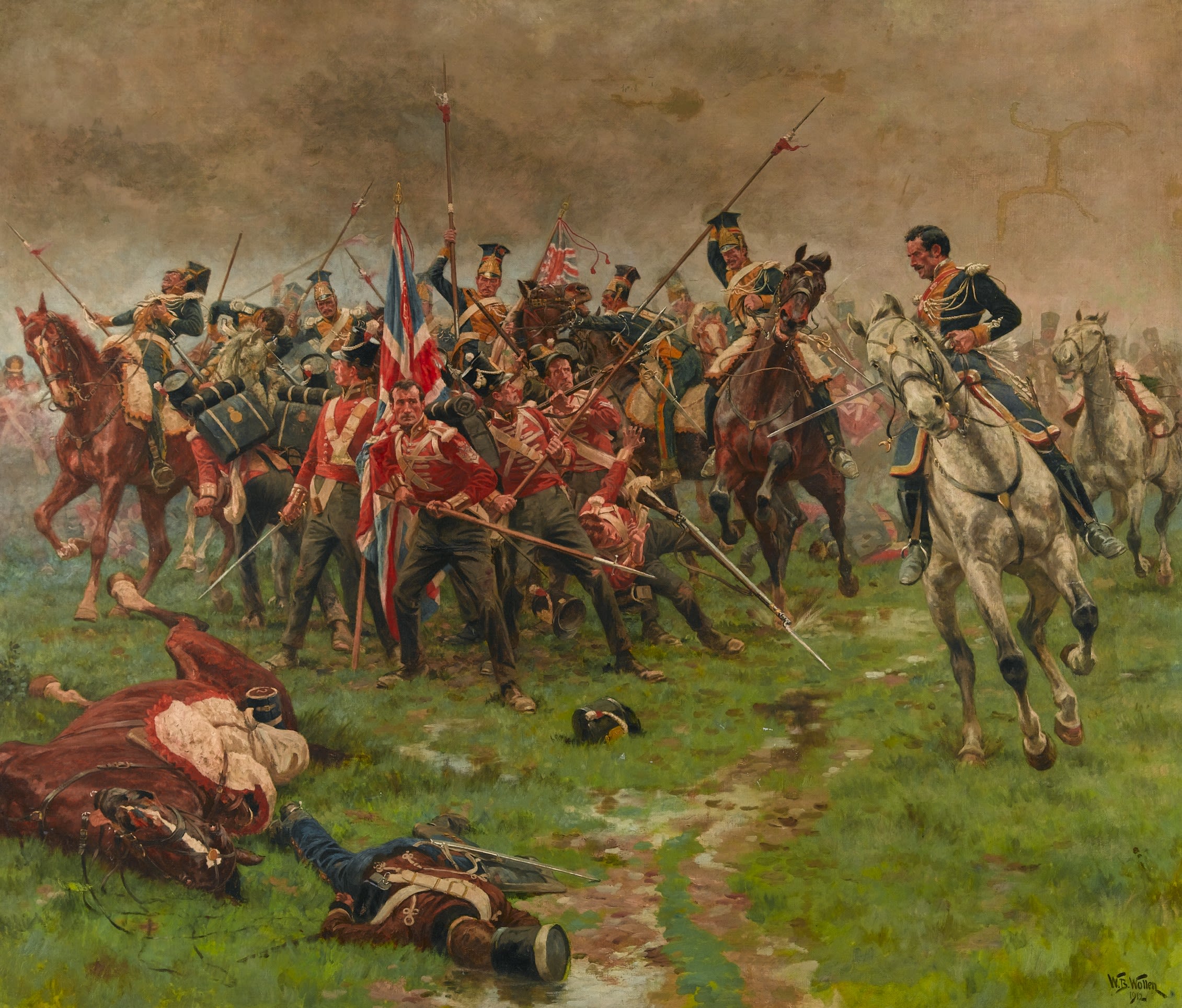
William Barns Wollen (1857-1936), The flag: Albuhera, May 16, 1811. Oil on canvas, 1912. Courtesy of the Council of the National Army Museum, London.
William Barns Wollen (1857-1936), The flag: Albuhera, May 16, 1811. Oil on canvas, 1912. Courtesy of the Council of the National Army Museum, London.
Remember that this is no common flag which I am committing to your keeping… It is the emblem of duty; the outward sign of your allegiance to God, your Sovereign, and Country; to be looked up to, to be venerated, and to be passed down untarnished by succeeding generations.
Excerpt of a speech by George V, presenting the colours to the 1st Battalion Durham Light Infantry, Delhi, 1911.
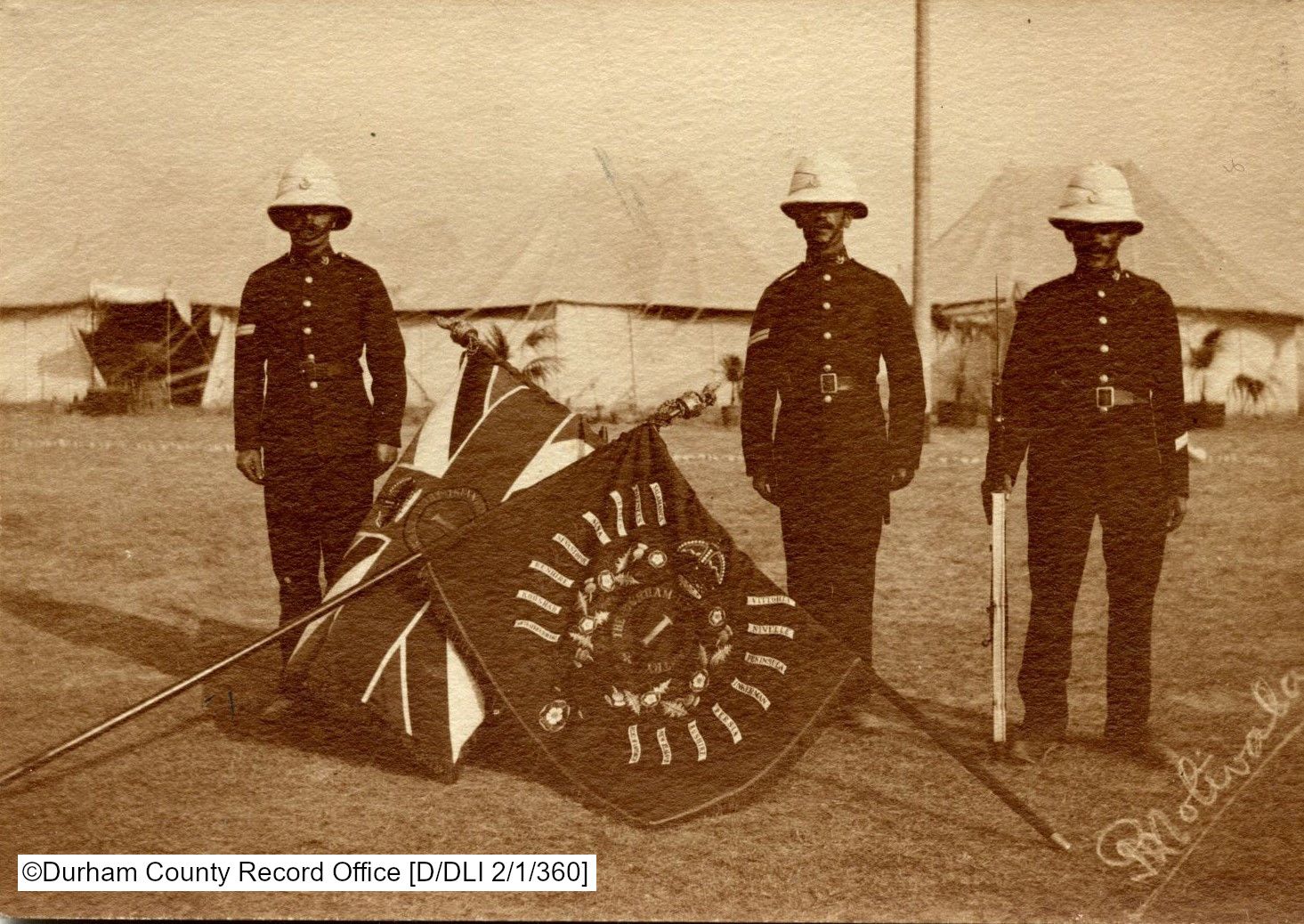
Today, Colours are still an important symbol of a regiment. They act as a physical reminder of regimental honour and a way of remembering all those who served under them.
They are the heart of the regiment, the life and soul. They are very revered, they are our history.
Once colours were no longer present on the battlefield, they were still represented through poetry, songs and art.
The DLI Collection contains objects that feature images of the Colours, including ornaments and musical instruments. These tributes are a way for soldiers to carry the Colours with them, even after their service ends.
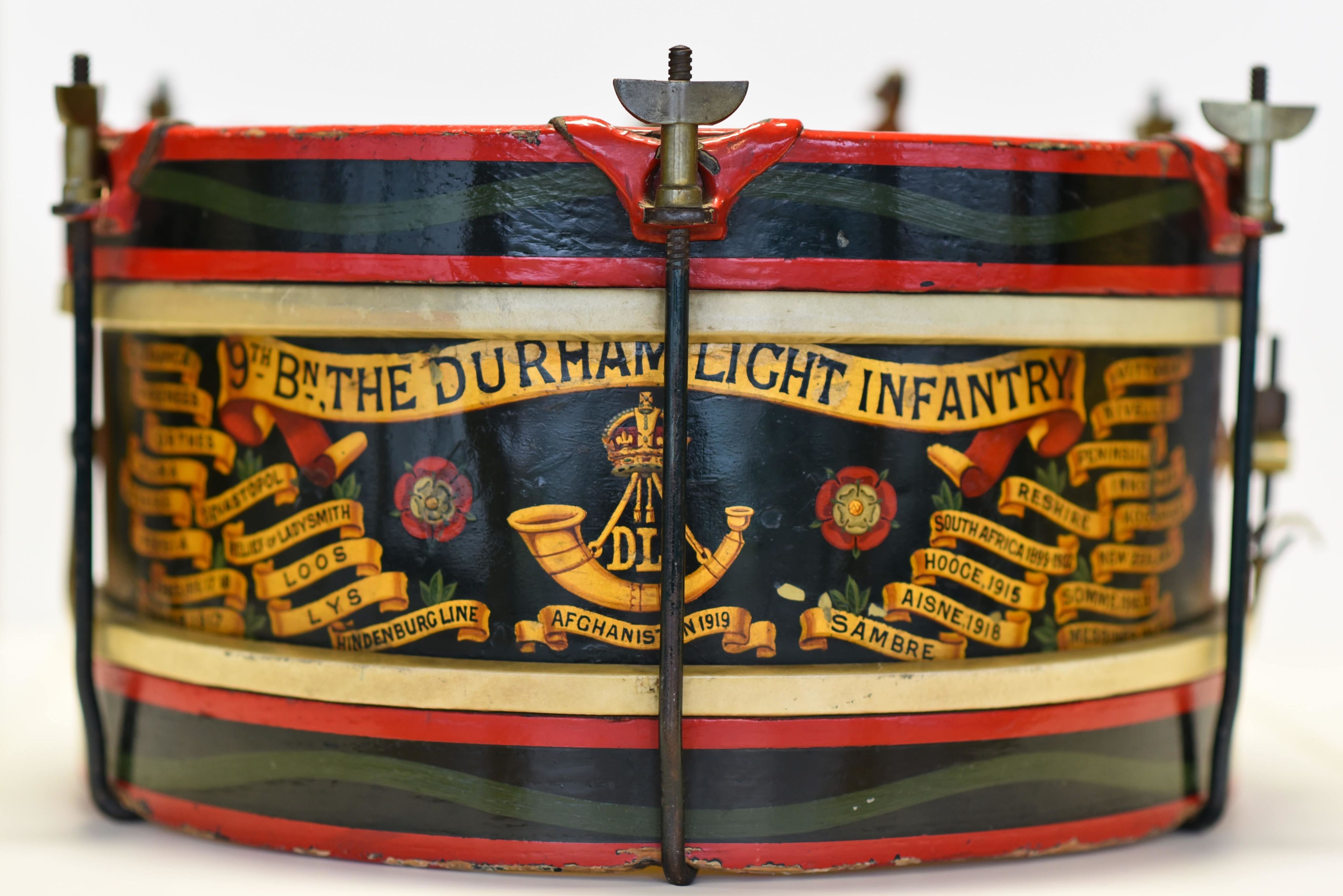
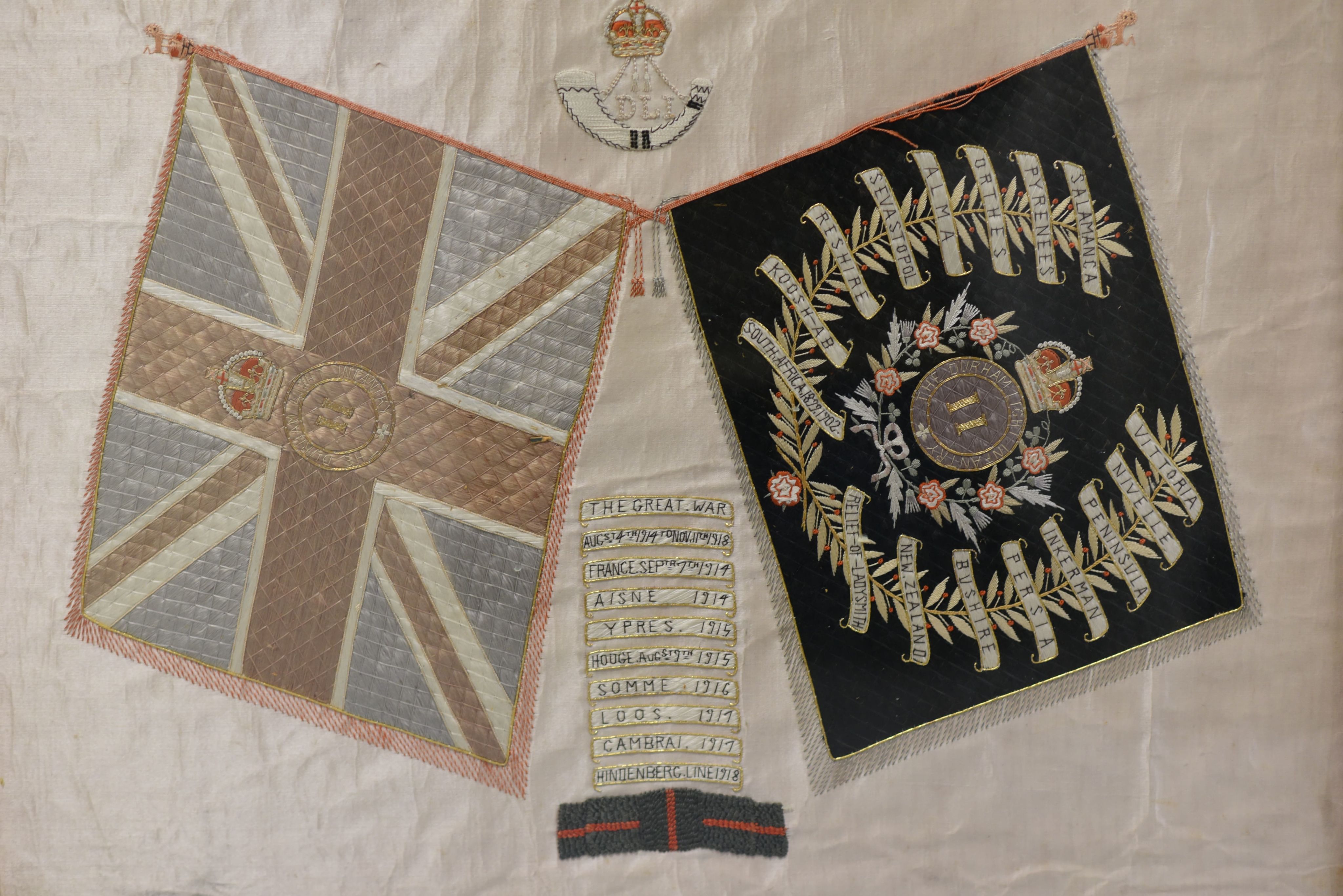
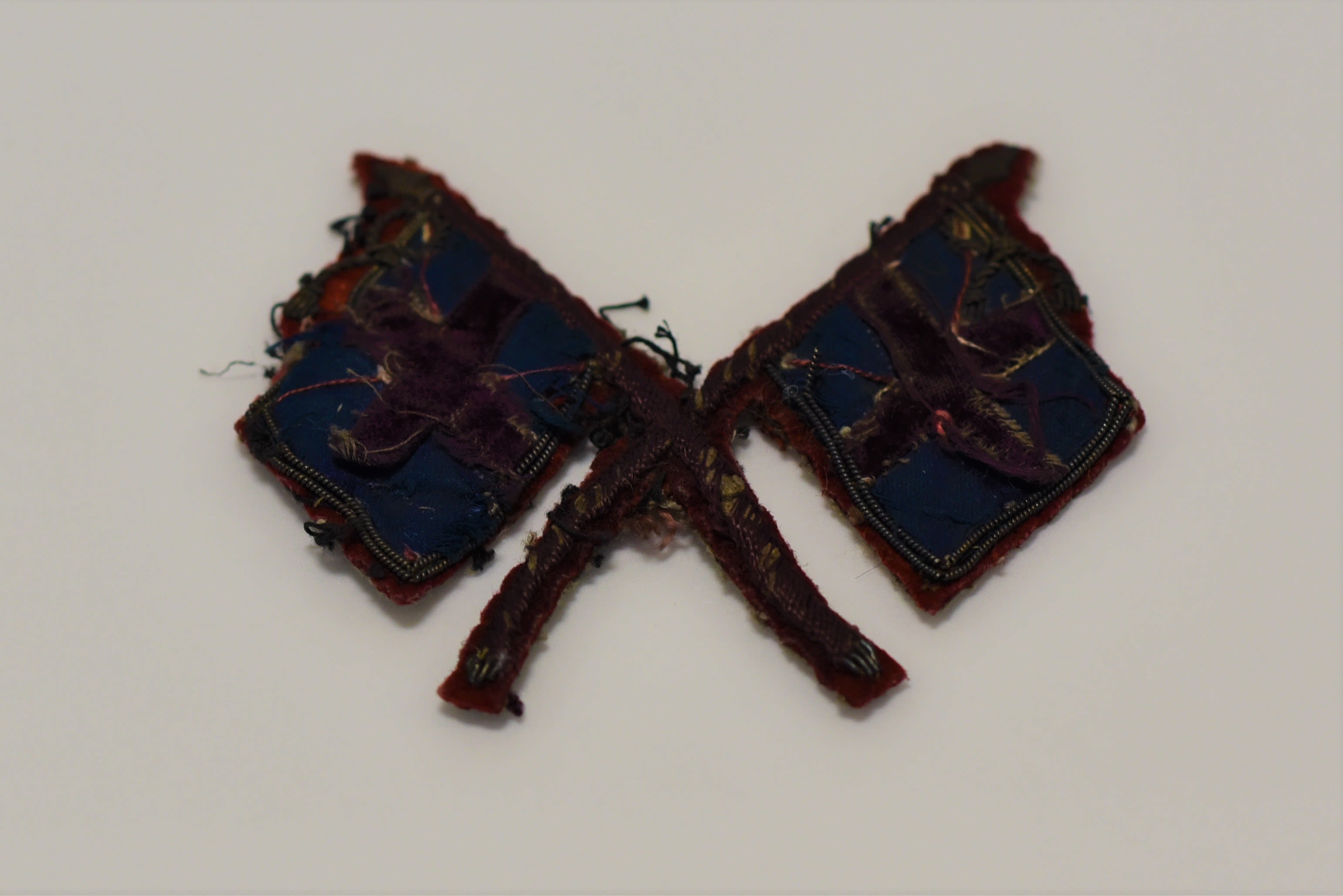
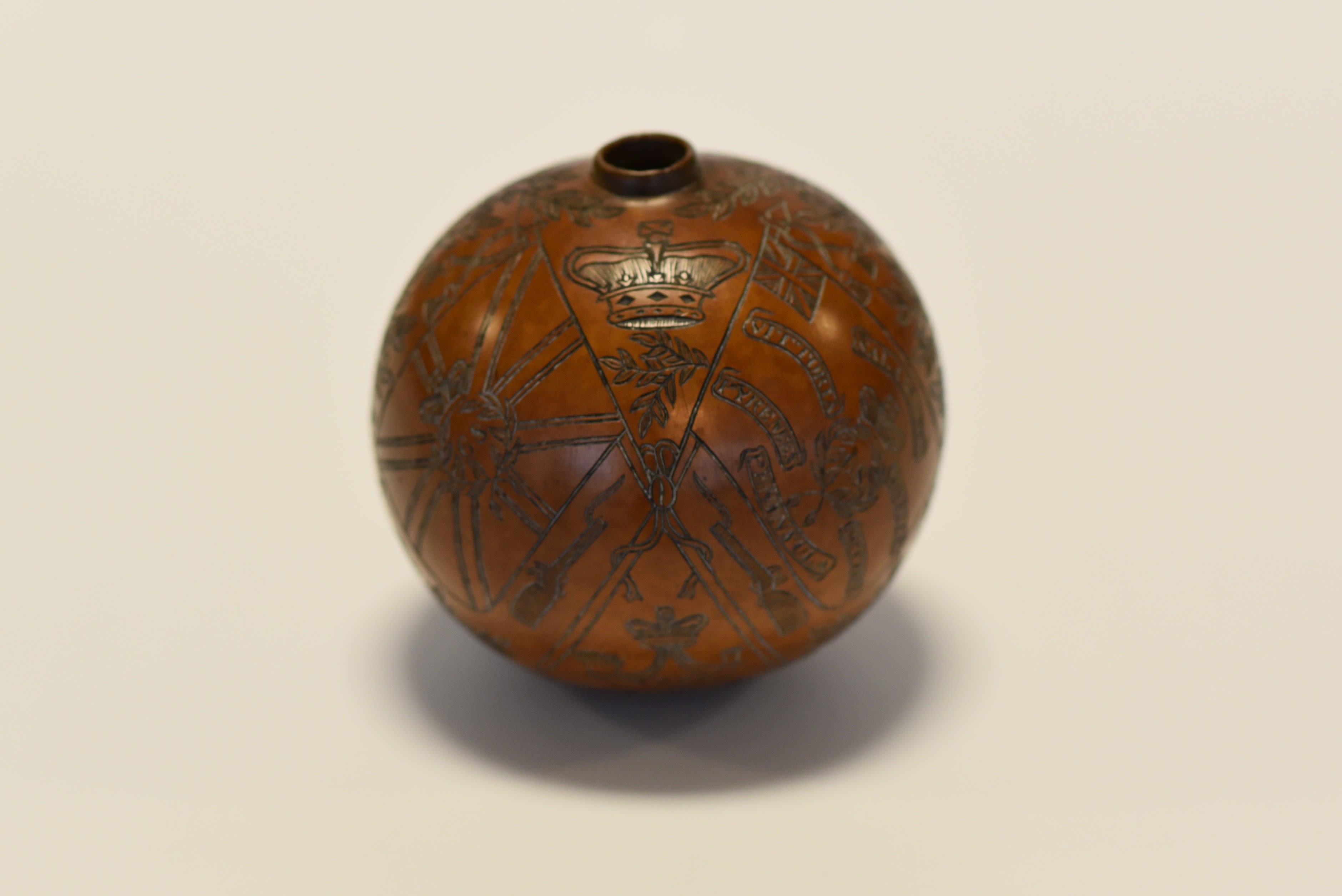



Side Drum, 9 DLI, c.1922 | This drum would have been played during drills and regimental parades. The imagery is very similar to what we see on the 9 DLI Regimental Colours.
Side Drum, 9 DLI, c.1922 | This drum would have been played during drills and regimental parades. The imagery is very similar to what we see on the 9 DLI Regimental Colours.

Embroidery | This silk showing the Colours of 2 DLI was created to honour the Battalion’s service in the First World War.
Embroidery | This silk showing the Colours of 2 DLI was created to honour the Battalion’s service in the First World War.

Badge | This badge showing the Colours belonged to William Scull, who served as a Colour-Sergeant with 2 DLI and 4 DLI from 1895 – 1914.
Badge | This badge showing the Colours belonged to William Scull, who served as a Colour-Sergeant with 2 DLI and 4 DLI from 1895 – 1914.

Gourd Shell Vessel, c. 1840s | This vessel, made from the shell of a gourd, was produced in the West Indies and is carved to show the Colours of the 68th Regiment of Foot.
Gourd Shell Vessel, c. 1840s | This vessel, made from the shell of a gourd, was produced in the West Indies and is carved to show the Colours of the 68th Regiment of Foot.
Ian Brown served with the 7th Battalion The (Durham) Light Infantry from 1980 - 1998. In this interview he reflects on what the Colours mean to him.
Ian Brown served with the 7th Battalion The (Durham) Light Infantry from 1980 - 1998. In this interview he reflects on what the Colours mean to him.
Sir Edward Hamley wrote this poem after seeing Colours laid up in a church. Hamley was a Lieutenant General in the British Army, who also served as an MP for Birkenhead.
Sir Edward Hamley wrote this poem after seeing Colours laid up in a church. Hamley was a Lieutenant General in the British Army, who also served as an MP for Birkenhead.
This marching song from 1907 titled Follow The Colours was composed by Sir Edward Elgar, with lyrics by William de Courcy Stretton. Stretton served in the DLI following in the footsteps of his father, Severus Stretton, who in the 1800s served as an Ensign in the 68th Regiment of Foot.
As the Colours reached a point opposite to the South African War Memorial the band struck up ‘Auld Lang Syne’, an impressive incident which doubtless moved many a war-stained veteran, now, alas! Slowly ascending the slippery banks of time, to envisage not a few of the thrilling deeds proudly recorded in the inspiring annals of The Durham Light Infantry.


Unless otherwise stated, all photographs reproduced with the permission of the Trustees of the Former Durham Light Infantry Regiment and the DLI Collection.
Unless otherwise stated, all photographs reproduced with the permission of the Trustees of the Former Durham Light Infantry Regiment and the DLI Collection.

